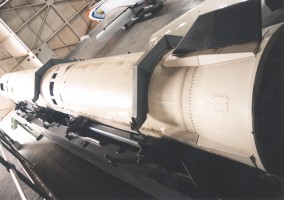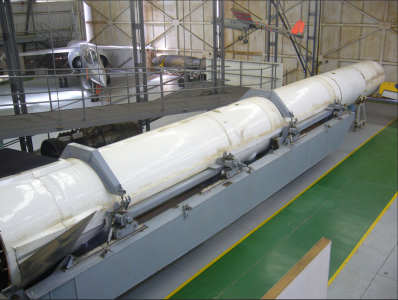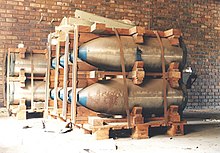Nuclear weapons matter to every country in the world because they pose a threat on three grounds. Yet, increasingly, people in these states have put pressure on their governments to at least acknowledge the benefits of such a ban. "[30], According to David Albright and Andrea Strickner South Africa also engaged in close long term cooperation with Taiwan, which at the time was controlled by the autocratic KMT regime, sometimes along with the Israelis. But declassified documents and official accounts help historians understand what drove the countrys leaders to pursue a nuclear program and what motivated them to give it up less than two decades later.  African states and civil society played an important role in the Ban Treaty process, but need to keep the momentum by asserting Africas role on this issue. These consisted of toxins in chemical, plant and in biological nature. It couldnt participate in the UN General Assembly, for example, which also encouraged member countries to sanction South Africa. At the same time, European countries imposed trade sanctions, the worlds major oil producers established an oil embargo, and major financial institutions in the United States and Japan refused to do business in South Africa. Government accounts claim that South Africa pursued nuclear weapons, at least in part, to counter security threats from its neighbors. NON-PROLIFERATION OF WEAPONS OF MASS DESTRUCTION AMENDMENT ACT, 1995.
African states and civil society played an important role in the Ban Treaty process, but need to keep the momentum by asserting Africas role on this issue. These consisted of toxins in chemical, plant and in biological nature. It couldnt participate in the UN General Assembly, for example, which also encouraged member countries to sanction South Africa. At the same time, European countries imposed trade sanctions, the worlds major oil producers established an oil embargo, and major financial institutions in the United States and Japan refused to do business in South Africa. Government accounts claim that South Africa pursued nuclear weapons, at least in part, to counter security threats from its neighbors. NON-PROLIFERATION OF WEAPONS OF MASS DESTRUCTION AMENDMENT ACT, 1995.
South Africas apartheid government feared communist influences in those two countries.
Nuclear weapons may seem to be an issue far removed from Africas immediate security concerns, which is rather centred on small arms, intra-state conflict and human security issues. De Klerk disclosed the information about his weapons to the United States in an effort to get the weapons removed.[32]. 6 (Dec., 2002), pp. Rehabilitation didnt just mean getting on the same page as the majority of countries. South Africa was run at the time by the National Party, a conservative, anti-communist party that represented the interests of the ruling white minority known as Afrikaners. The countrys leaders at the time believed its international isolation was tied to apartheid, not its nuclear program. In February 2019, South Africa ratified the Treaty on the Prohibition of Nuclear Weapons, becoming the first country to have had nuclear weapons, disarmed them and gone on to sign the treaty. In addition to periodic on-site technical inspections conducted by the Agency's safeguards inspectors, verification is carried out to ensure that nuclear materials and installations are used only for peaceful purposes and applications. It also wrongfully assumes that accidents, misunderstandings or sheer madness would not set off a nuclear exchange. In 1997, South African Deputy Foreign Minister Aziz Pahad stated that South Africa had conducted a test, but later retracted his statement as being a report of rumours.[23]. The Soviet and Western governments were convinced that South Africa was preparing for a full-scale nuclear test. After all, there are no nuclear weapons on the continent. Secondly, the US and Russia also assumed that nuclear dominance would remain their prerogative. It was also claimed that South Africa supplied anthrax and cholera to government troops in Rhodesia (now Zimbabwe), which it is alleged were used against guerrillas there. The IAEA declared it had completed its inspection in late 1994 and that South Africa's nuclear weapons facilities had been dismantled. [5], South Africa gained sufficient experience with nuclear technology to capitalise on the promotion of the U.S. government's Peaceful Nuclear Explosions (PNE) program. Israeli President Shimon Peres claimed that The Guardian article was based on "selective interpretation and not on concrete facts. Joseph Cirincione, Jon B. Wolfsthal, Miriam Rajkumar. Nevertheless, nuclear disarmament should still be high on the priority list of African states foreign policy pursuits. The first National Party government under South African Prime Minister Daniel Francois Malan (seated at center) in 1948. At its peak in 1986 the arms race resulted in there being more than 60,000 nuclear weapons in the world far more destructive than the Hiroshima and Nagasaki bombs, mostly in the arsenals of the US and the Soviet Union (todays Russia). This holds that the only use for nuclear weapons is to deter a nuclear weapons attack from an adversary by assuring a retaliatory attack. In fact, the United States helped build South Africas first nuclear reactor in 1965 and supplied it with highly enriched uranium, necessary for nuclear weapons. If the Vela incident was a nuclear test, South Africa is virtually the only possible country, potentially in collaboration with Israel, which could have carried it out. As has happened in programmes in other nations, the development of the devices had outpaced the production of the fissile material. Nieuwoudt recruited South African cardiologist and army officer, Brig.
Five soldiers were said to have died, and many more were injured. [5] The South African and Pakistani scientists studied the use of aerodynamic-jet nozzle process to enrich the fuel at the University of Birmingham, later building their national programs in the 1970s. Arms control refers to restrictions that states agree to place on the development, testing, possession, deployment and use of certain weapons. This page was last edited on 26 July 2022, at 20:53.  A primary goal of South Africa's policy is to reinforce and promote the country's image as a responsible producer, possessor, and trader of advanced technologies in this field. In 1991, South Africa officially ended its policy of apartheid. It was led by the US and the Soviet Union, respectively. [1], South Africa was able to mine uranium ore domestically, and used aerodynamic nozzle enrichment techniques to produce weapons-grade material. Even then a clear understanding took root that nuclear war could not be won and must never be fought. During the 1970s, its system of apartheid and refusal to sign the NPT increasingly isolated South Africa. Because they havent joined the treaty, it is not legally binding on them. [39] Several front companies were created, including Delta G Scientific Company, Protechnik and Roodeplaat Research Laboratories to facilitate the research and development of chemical and biological weapons. [45][46] In January of 1992, the government of Mozambique alleged that either South Africa, or South African backed Renamo forces deployed an artillery-delivered airburst chemical weapon during a battle at a rebel base in Tete province. Copyright 20102022, The Conversation US, Inc. Treaty on the Non-Proliferation of Nuclear Weapons, the arsenals of the US and the Soviet Union, breach of disarmament norms and obligations, the Treaty on the Prohibition of Nuclear Weapons, humanitarian consequences of using nuclear weapons. They thought that nuclear weapons would protect the country from security threats, not extend its exile. They can throw their diplomatic weight behind the calls to eliminate them and use the power of their numbers to strengthen the pressure on nuclear-armed states to disarm. South Africa became a member of the Committee on October 21, 1993. In 1993, Bill Keller of The New York Times reported that popular suspicion in Southern African nations held that the timing of disarmament indicated a desire to prevent a nuclear arsenal from falling into the hands of a native African and Coloured government with the collapse of the Apartheid system controlled by European settlers. Why should African states and people be concerned about nuclear disarmament? They should also encourage more states to join the treaty, especially African states only nine are members.
A primary goal of South Africa's policy is to reinforce and promote the country's image as a responsible producer, possessor, and trader of advanced technologies in this field. In 1991, South Africa officially ended its policy of apartheid. It was led by the US and the Soviet Union, respectively. [1], South Africa was able to mine uranium ore domestically, and used aerodynamic nozzle enrichment techniques to produce weapons-grade material. Even then a clear understanding took root that nuclear war could not be won and must never be fought. During the 1970s, its system of apartheid and refusal to sign the NPT increasingly isolated South Africa. Because they havent joined the treaty, it is not legally binding on them. [39] Several front companies were created, including Delta G Scientific Company, Protechnik and Roodeplaat Research Laboratories to facilitate the research and development of chemical and biological weapons. [45][46] In January of 1992, the government of Mozambique alleged that either South Africa, or South African backed Renamo forces deployed an artillery-delivered airburst chemical weapon during a battle at a rebel base in Tete province. Copyright 20102022, The Conversation US, Inc. Treaty on the Non-Proliferation of Nuclear Weapons, the arsenals of the US and the Soviet Union, breach of disarmament norms and obligations, the Treaty on the Prohibition of Nuclear Weapons, humanitarian consequences of using nuclear weapons. They thought that nuclear weapons would protect the country from security threats, not extend its exile. They can throw their diplomatic weight behind the calls to eliminate them and use the power of their numbers to strengthen the pressure on nuclear-armed states to disarm. South Africa became a member of the Committee on October 21, 1993. In 1993, Bill Keller of The New York Times reported that popular suspicion in Southern African nations held that the timing of disarmament indicated a desire to prevent a nuclear arsenal from falling into the hands of a native African and Coloured government with the collapse of the Apartheid system controlled by European settlers. Why should African states and people be concerned about nuclear disarmament? They should also encourage more states to join the treaty, especially African states only nine are members.  The resultant treaties between these two states reduced nuclear weapons, but were only half measures in two respects. The country has been a signatory of the Biological Weapons Convention since 1975, the Treaty on the Non-Proliferation of Nuclear Weapons since 1991, and the Chemical Weapons Convention since 1995. These characteristics increase uncertainty among decision-makers in a deterrence relationship, thereby increasing the potential for accidental nuclear launches. The scale of destruction and contamination that would follow a nuclear detonation would make an adequate response to the crisis that followed impossible. In February 1994, Commodore Dieter Gerhardt, former commander of South Africa's Simon's Town naval base who was later convicted of spying for the USSR, was reported to have said: Although I was not directly involved in planning or carrying out the operation, I learned unofficially that the flash was produced by an Israeli-South African test code-named Operation Phoenix. - Plague War", Birth and Death of the South African Nuclear Weapons Programme, Out of (South) Africa: Pretorias Nuclear Weapons Experience, Nuclear Files.org guide to proliferation South Africa, The Nuclear Weapon Archive account of South Africa, Israel conducted nuclear experiment in 1979, South Africa's Nuclear Autopsy: The Risk Report, Annotated bibliography for the South African Nuclear Program from the Alsos Digital Library for Nuclear Issues, South Africa's Nuclear Weapons Storage Vault, The Woodrow Wilson Center's Nuclear Proliferation International History Project, Department of International Relations and Cooperation, Department of International Relations and Cooperation, official website, https://en.wikipedia.org/w/index.php?title=South_Africa_and_weapons_of_mass_destruction&oldid=1100617210, South Africa and weapons of mass destruction, Abandoned military projects of South Africa, All Wikipedia articles written in South African English, Wikipedia articles needing clarification from March 2020, Creative Commons Attribution-ShareAlike License 3.0, Scientific work on the feasibility of peaceful nuclear explosives and support to nuclear power production efforts, Atomic Energy Board forms group to evaluate technical and economic aspects of nuclear explosives, Atomic Energy Commission (AEC) releases report identifying uses for nuclear explosives, R&D approval granted for "peaceful use of nuclear explosives", AEC completes bomb assembly for "cold" test, First deliverable bomb built; work on weapons safety, First production bomb built; seven produced, with an eighth under construction, Armscor prepares Vastrap for a nuclear test.
The resultant treaties between these two states reduced nuclear weapons, but were only half measures in two respects. The country has been a signatory of the Biological Weapons Convention since 1975, the Treaty on the Non-Proliferation of Nuclear Weapons since 1991, and the Chemical Weapons Convention since 1995. These characteristics increase uncertainty among decision-makers in a deterrence relationship, thereby increasing the potential for accidental nuclear launches. The scale of destruction and contamination that would follow a nuclear detonation would make an adequate response to the crisis that followed impossible. In February 1994, Commodore Dieter Gerhardt, former commander of South Africa's Simon's Town naval base who was later convicted of spying for the USSR, was reported to have said: Although I was not directly involved in planning or carrying out the operation, I learned unofficially that the flash was produced by an Israeli-South African test code-named Operation Phoenix. - Plague War", Birth and Death of the South African Nuclear Weapons Programme, Out of (South) Africa: Pretorias Nuclear Weapons Experience, Nuclear Files.org guide to proliferation South Africa, The Nuclear Weapon Archive account of South Africa, Israel conducted nuclear experiment in 1979, South Africa's Nuclear Autopsy: The Risk Report, Annotated bibliography for the South African Nuclear Program from the Alsos Digital Library for Nuclear Issues, South Africa's Nuclear Weapons Storage Vault, The Woodrow Wilson Center's Nuclear Proliferation International History Project, Department of International Relations and Cooperation, Department of International Relations and Cooperation, official website, https://en.wikipedia.org/w/index.php?title=South_Africa_and_weapons_of_mass_destruction&oldid=1100617210, South Africa and weapons of mass destruction, Abandoned military projects of South Africa, All Wikipedia articles written in South African English, Wikipedia articles needing clarification from March 2020, Creative Commons Attribution-ShareAlike License 3.0, Scientific work on the feasibility of peaceful nuclear explosives and support to nuclear power production efforts, Atomic Energy Board forms group to evaluate technical and economic aspects of nuclear explosives, Atomic Energy Commission (AEC) releases report identifying uses for nuclear explosives, R&D approval granted for "peaceful use of nuclear explosives", AEC completes bomb assembly for "cold" test, First deliverable bomb built; work on weapons safety, First production bomb built; seven produced, with an eighth under construction, Armscor prepares Vastrap for a nuclear test. 